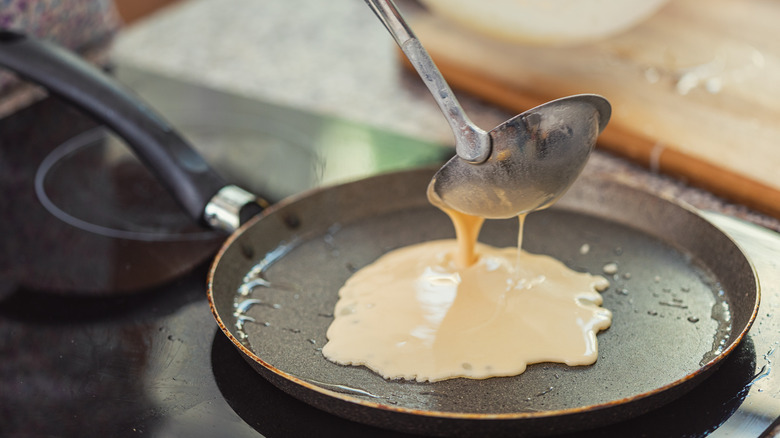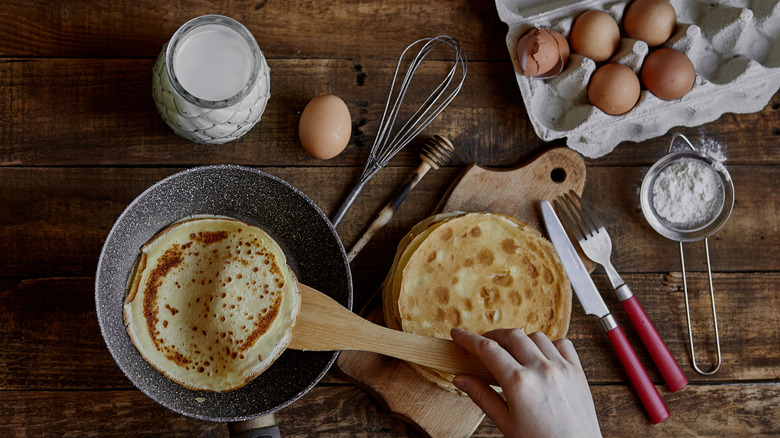The Extra Step That Separates Good Crepes From Great Ones
If you've never made crepes from scratch, you might think the process is foolproof because of how simple the ingredients and flavors are. But whether you use the perfect crepes recipe or leftover pancake batter, they can easily develop a rubbery texture, which happens when you overmix the batter. If you undermix the batter, however, you'll end up with too many lumps. Sure, they'll be edible, but there's an additional step you can take that'll improve their quality. All you have to do is run the batter through a sieve or mesh strainer to separate the lumps.
Before straining your crepe batter, eliminate as many lumps as possible. If you notice large streaks of flour, egg, or other ingredients, continue mixing until they are better incorporated. Just don't mix so long that you start to see lots of air bubbles and the consistency begins to thicken excessively. Once you've mixed the batter thoroughly, strain it to remove any remaining lumps for a smooth and consistent texture.
What happens when you don't strain crepe batter
Even if you don't care much about presentation, not bothering to strain out the lumps in crepe batter will still affect how well it cooks — not just how smooth it looks. This is because lumps are technically clumps of wet and dry ingredients, and by leaving them in your batter, you're basically leaving in pockets of ingredients like butter that aren't properly dispersed. This can lead to uneven cooking, resulting in crepes that may be thicker or more undercooked in certain spots.
Unstrained crepe batter also doesn't spread as well, and this directly impacts how thin the crepes will turn out. Additionally, lumps trap air and cause air bubbles, which yield a fluffier texture. That might be a good thing for pancakes, but not so much for crepes. When crepes are too thick, they can rip when you try to fold them. For these reasons, it's best to strain out all the lumps.
How to prevent lumpy crepe batter
Straining crepe batter is a perfectly effective approach to getting rid of lumps, but there are also things you can do to minimize how many of them form in the first place. For starters, sift the flour after measuring to ensure a more seamless incorporation of dry ingredients into the batter. Also, be mindful of the temperature of the melted butter. When the butter is too hot, it'll solidify once it comes in contact with the cold batter, translating to lumps. Therefore, it's best to let it cool first.
It also helps to use a food processor or immersion blender to mix the batter instead of hand whisking it. Hand whisking may not achieve the same level of thoroughness, while the blades of a food processor or blender can thoroughly incorporate the ingredients, reducing the amount of lumps. However, it's crucial to stop blending the batter as soon as all the lumps are gone or minimized to avoid overmixing and toughness. Remember, if there are any lumps left after this, you can always strain them out so your crepes turn out perfect.


